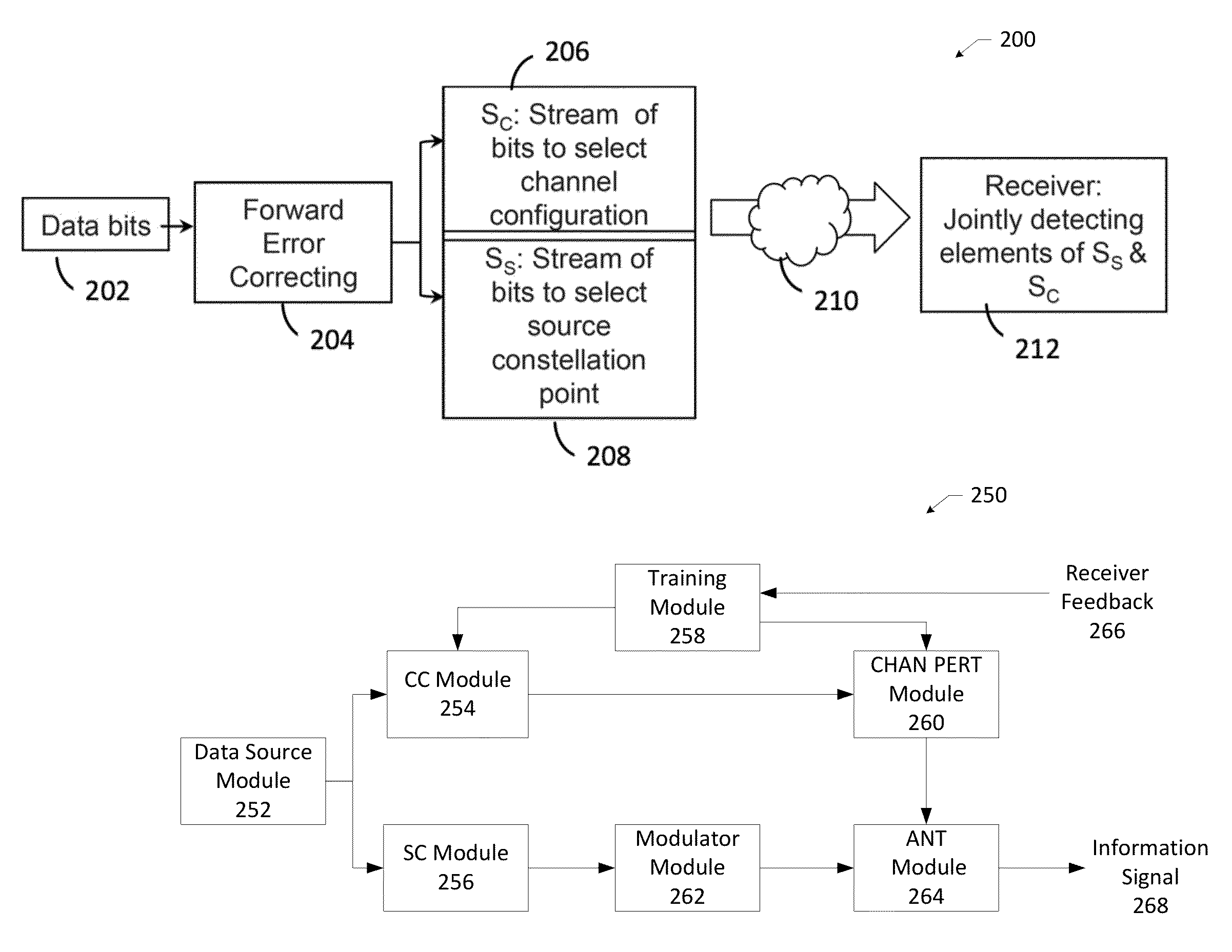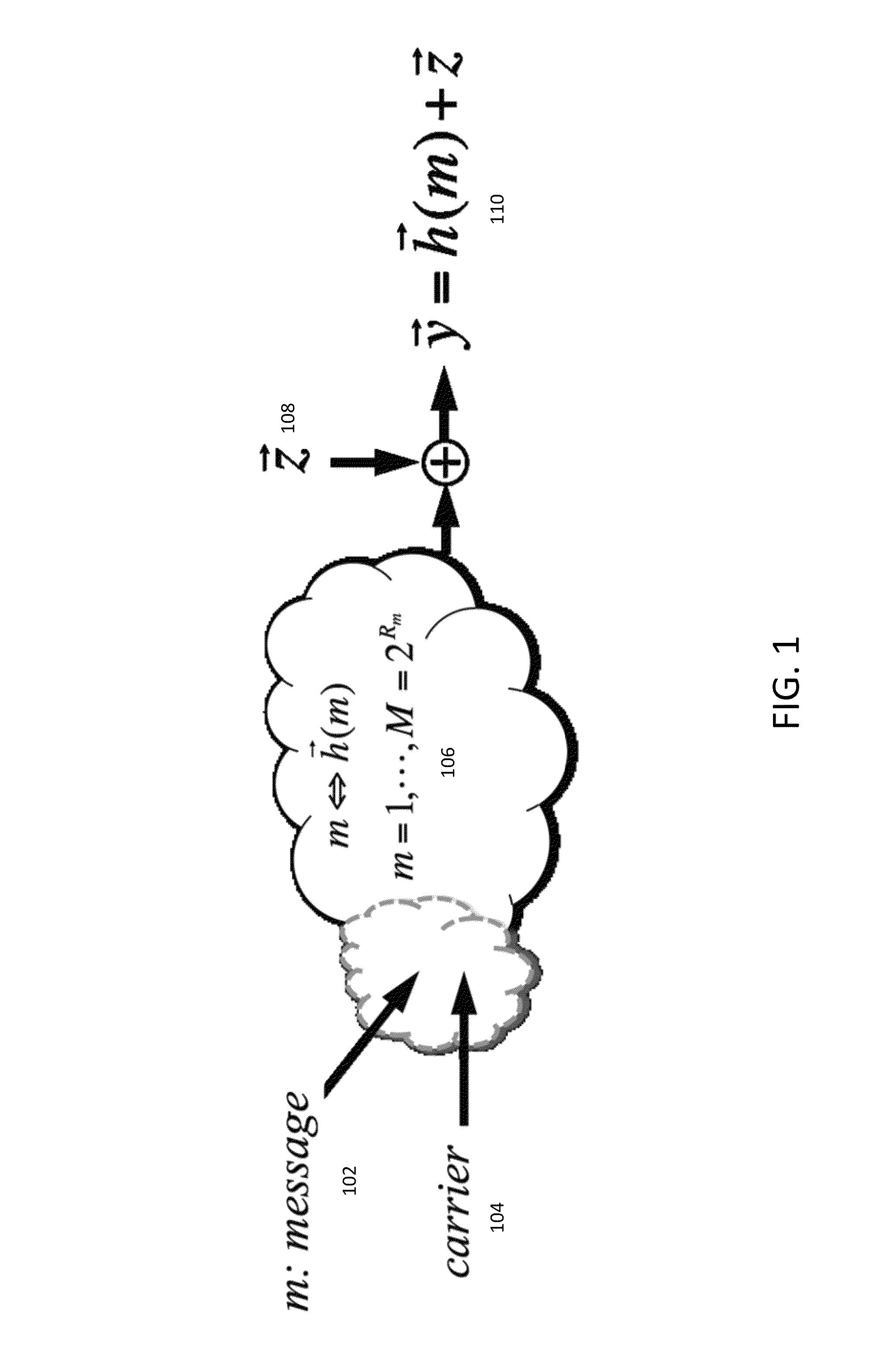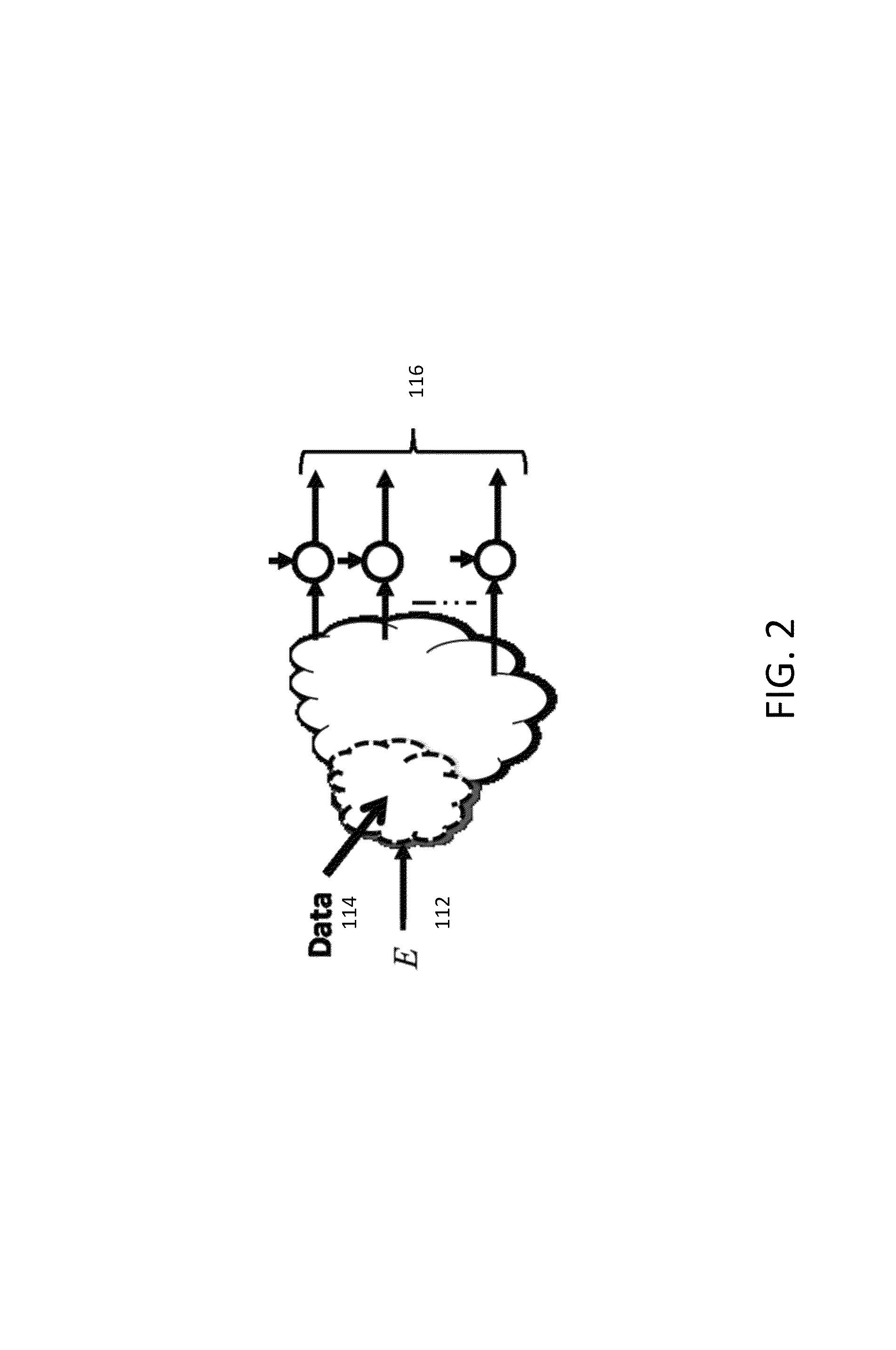Wireless transmission with channel state perturbation
a technology of channel state and wireless transmission, applied in the direction of site diversity, polarisation/directional diversity, duplex signal operation, etc., can solve problems such as fading in wireless systems
- Summary
- Abstract
- Description
- Claims
- Application Information
AI Technical Summary
Benefits of technology
Problems solved by technology
Method used
Image
Examples
example 1
[0036]Assume transmitter has access to 1024 possibilities (channel states) to perturb the channel and starts transmitting them one by one indexed from 0 to 1023 (transmits a fixed pilot and changes the channel from #0 to #1023 one after other), and then selects a subset of size say 256, by the receiver notifying the transmitter the selected elements indexed by values from 0 to 1023 are acceptable (total of 256). Acceptable may signify that the received signal may have a signal quality over a predetermined threshold (e.g. SNR). Then, transmitter and receiver use the selected 256 elements indexed from 0 to 255 in agreement with the original implicit ordering they were tried by the transmitter during the learning phase.
[0037]Further examples of the training phase of media-based communications include the following.
example 2
[0038]There are 28 possibilities for channel configurations indexed by 0, . . . 255. Such an embodiment transmits 6 bits per channel use. Phase I: Transmitters fixes the source at 1 and activates the possible channel configurations one after the other in the same order as these are indexed. Meanwhile, receiver measures the corresponding received signals. The receiver has measured 28 channel configurations. The receiver selects the best subsets of size 1, 2, 22, 23, 24, 25, 26, to be potentially used together with a source constellation of sizes 26, 25, 24, 23, 22, 2, 1 (all 7 options provide the required bit rate of 6 bits per channel use). Receiver decides which of these 7 options would perform better (e.g. lower transmit energy for a given error probability) and inform the transmitter. Information sent to transmitter can be as simple as sending the indices of the selected configurations, or include some additional information such as a scale factor to increase transmit energy depe...
example 3
[0039]There are 28 possibilities for channel configurations indexed by 0, . . . 255. Such an embodiment transmits 6 bits per channel use. Further, such an embodiment may have a fixed policy and always embeds 2 bits in the source variations and 4 bits in the channel variations. Transmitter fixes the source at 1 and activates the possible channel configurations one after the other in the same order as these are indexed. Meanwhile, receiver measures the corresponding received signals. Receiver accepts or rejects each configuration and in parallel with the forward link sends a yes / no answer back to the transmitter to communicate its decision. If the number of selected configurations for inclusion in the selected subset is less than the desired value of 26=64, then training phase repeats using those configurations that were not accepted in the first phase, and so on, until a selected subset of size 64 is agreed upon. A variety of such selection policies and feedback mechanisms are possib...
PUM
 Login to View More
Login to View More Abstract
Description
Claims
Application Information
 Login to View More
Login to View More - R&D
- Intellectual Property
- Life Sciences
- Materials
- Tech Scout
- Unparalleled Data Quality
- Higher Quality Content
- 60% Fewer Hallucinations
Browse by: Latest US Patents, China's latest patents, Technical Efficacy Thesaurus, Application Domain, Technology Topic, Popular Technical Reports.
© 2025 PatSnap. All rights reserved.Legal|Privacy policy|Modern Slavery Act Transparency Statement|Sitemap|About US| Contact US: help@patsnap.com



